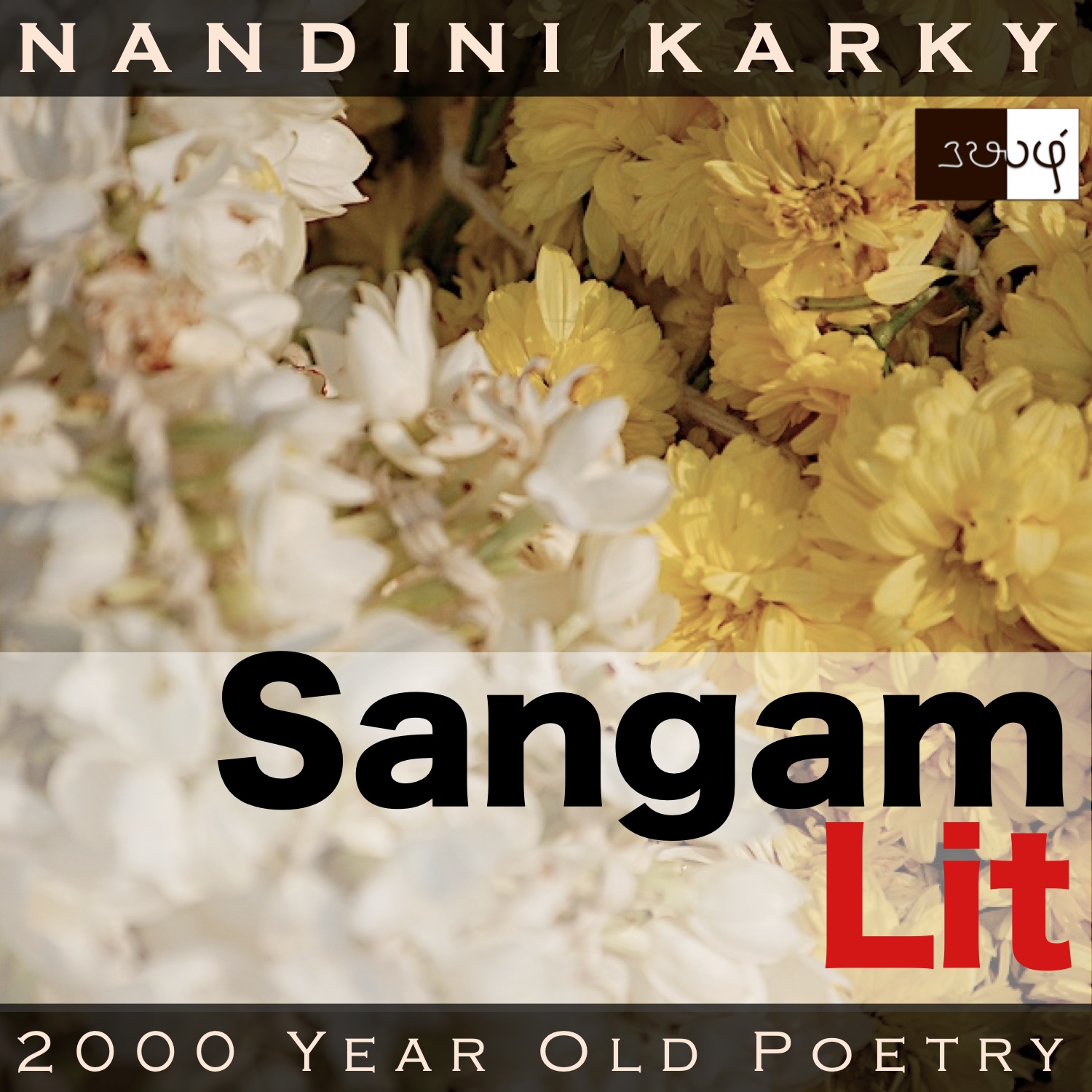Podcast: Play in new window | Download
Subscribe: Apple Podcasts | Spotify | Amazon Music | Android | iHeartRadio | TuneIn | RSS | More

In this episode, we listen to an amused expression of wonder, as depicted in Sangam Literary work, Kurunthogai 229, penned by Modhaasanaar. The verse is situated in the drylands of ‘Paalai’ and speaks in the voice of wayfarers amongst themselves, on observing the man and lady, eloping together.
இவன் இவள் ஐம்பால் பற்றவும், இவள் இவன்
புன் தலை ஓரி வாங்குநள் பரியவும்,
காதற் செவிலியர் தவிர்ப்பவும் தவிராது,
ஏதில் சிறு செரு உறுபமன்னோ!
நல்லை மன்றம்ம பாலே-மெல் இயல்
துணை மலர்ப் பிணையல் அன்ன இவர்
மணம் மகிழ் இயற்கை காட்டியோயே.
‘How wondrous the hand of fate’ marvels this verse. In the opening words ‘இவன் இவள் ஐம்பால் பற்றவும்’ meaning ‘As he grabs her thick, five-layered tresses’, we glimpse at the act of a girl’s hair being pulled. This is followed by ‘இவள் இவன் புன் தலை ஓரி வாங்குநள்’ meaning ‘she pulls his coarse hair’ telling us the girl we met earlier is giving it back in kind. The phrase ‘ஏதில் சிறு செரு’ meaning ‘petty feuds filled with enmity’ characterises the nature of relationship between two people. ‘நல்லை மன்றம்ம பாலே’ meaning ‘isn’t fate something really good?’ taught me a new meaning for the word ‘பால்’, which seems to have a long list of diverse meanings, starting from an ubiquitous food item such as ‘milk’, going on to ‘gender’ and ‘division’, all the way to the ultimate abstraction of ‘fate’ or destiny’, as employed here. The words ‘துணை மலர்ப் பிணையல்’ talk about ‘a rich garland tied with two different flowers’, subtly illustrating the importance of flowers and garlands in this society. Ending with the words ‘மணம் மகிழ் இயற்கை காட்டியோயே’ meaning ‘shown the state of happy marriage’, the verse beckons our attention.
First, there was talk of fights and in the end, there’s mention of marriage – Curious, isn’t it? The context reveals that the man and lady were leading a love relationship when they decided to elope together to protect their union. As they were walking in the drylands, people, who have known them for long, see them together and remark, “He used to grab and pull her five-layered plait; She used to twist and pull his scanty hair and then run away; Inspite of their adoring attendants’ interventions, they used to indulge in petty, little fights constantly. O Fate! You are indeed the epitome of goodness, for now, you have left them both, akin to well-woven twin flowers in a soft garland, in the together state of a happy union.” With these words, the wayfarers are commenting on the surprising nature of fate that brings together two unlikely people as one.
Time to explore the nuances. The wayfarers observing the man and lady walking together look back at their past. In childhood, they both had known each other and the nature of their relationship was such that the boy used to pull the girl’s hair and the girl used to do the same to him. Beyond that, the girl and boy used to endlessly fight, even as their nurses tried to calm them down. A pair always at war with each other, they were, remember these wayfarers. And then they look at the current state of the man and lady, who have chosen a life together, akin to two different flowers being tied together in a soft garland, and marvel at the hand of fate that has made this impossible event possible!
A song which makes me think of all those love stories, in which the protagonists begin their relationship in a fight and end up on the other side of the spectrum. Even more than love at first sight, I prefer a fight at first sight! Totally satisfying arcs, these books and movies tend to have. To see how the nature of their relationship transforms is to be in the presence of awe. That a two thousand year old verse can talk about an intricate aspect of relationship that’s readily accessible to our modern minds tell us about the timelessness of the magic of love!




Nice 🙂